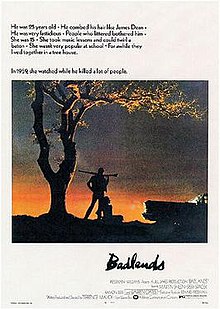Sunday, April 14, 2013
The Language of Films
I've always thought films spoke different languages. A summary of the plot is the traditional way to describe a film, but sometimes the plot isn't the main focus of the director. If I were to tell you that I watched a film about gangs in New York city last night, then I could have been referring to Goodfellas - but I might also have been referring to West Side Story. Clearly the language of these films separates them far more than a casual plot. Terrence Malick has developed his own language for his films. Audiences judging his works based on plot, will probably be disappointed. I imagine To The Wonder will divide audience again. Some directors or films strive to make you "think". Life of Pi seemed to be asking it's audience to analyze "faith" - in much the same way that A.I. asked it's audience to analyze "love". So, the next time you dive into another mindless summer popcorn sequel - remember being a film fan doesn't have to always be a passive experience.
Sunday, April 7, 2013
Good things come in threes
 Where do you draw the line between inspiration and plagiarism in film? Courts have examined, critics have disputed, fans have debated - yet the practice still lives on, mainly because the potential for big money is so tempting. There are countless examples of two studios green-lighting similar properties at the same time, hoping to beat the other. Tombstone vs. Wyatt Earp. 1492: Conquest of Paradise vs Christopher Columbus: The Discovery. Or perhaps one of the most interesting of these scenarios is when very similar plots all materialized in Like Father Like Son (1987), 18 Again! (1988), Vice Versa (1988), and Big (1988).
Where do you draw the line between inspiration and plagiarism in film? Courts have examined, critics have disputed, fans have debated - yet the practice still lives on, mainly because the potential for big money is so tempting. There are countless examples of two studios green-lighting similar properties at the same time, hoping to beat the other. Tombstone vs. Wyatt Earp. 1492: Conquest of Paradise vs Christopher Columbus: The Discovery. Or perhaps one of the most interesting of these scenarios is when very similar plots all materialized in Like Father Like Son (1987), 18 Again! (1988), Vice Versa (1988), and Big (1988).Many times there is a clear hit, or winner. Or one is viewed as basically a knock-off, cheap, quick money-grab imitation. (Mac & Me I'm looking at you.) But remarkably, two of today's most acclaimed/successful directors both started down their career paths in similar fashions. When Arthur Penn's Bonnie & Clyde hit the theaters in 1967, it changed the way violence and film could coexist. It also must have inspired two young directors, Steven Spielberg and Terrence Malick. A few years later Badlands and The Sugarland Express both explored similar ideas with similar characters. Malick and Spielberg's careers have differed greatly since that time, but have always found it interesting that they were drawn to similar stories at that time. It probably isn't fair to compare or judge one against the other, but you can clearly see the early talents of two exceptional directors. I'm not sure that we will ever see this much talent tackle such similar ideas within such a close time frame again - but if you are looking to burn six or seven hours, this will make a tremendous triple feature.
Subscribe to:
Posts (Atom)


